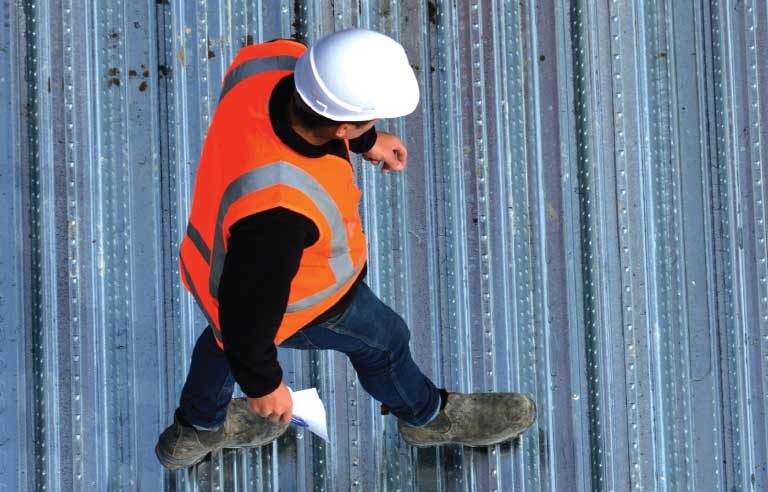Rooftop hazards
What are the primary hazards associated with rooftop openings and unprotected edges? What steps can employers take to ensure worker safety?

Responding is Daniel Huntington, general manager, Kee Safety, Buffalo, NY.
In the realm of occupational safety, rooftops represent a unique challenge. Rooftop openings such as skylights, hatches and unprotected edges are potential hazards.
Here, we’ll delve into the primary hazards associated with rooftop openings and unprotected edges, as well as explore effective strategies to ensure worker safety.
Recognizing the dangers
1. Rooftop openings
Rooftop openings come in various forms, each with its own set of risks:
Skylights. Designed to provide natural light, skylights can be deceivingly fragile. Workers may inadvertently step on them, believing they can support their weight, leading to falls and severe injuries.
Hatches. Roof hatches offer access to rooftops but can be hazardous if left open or unsecured, posing a fall risk to workers below or above.
Access points. Open access points such as stairwells or elevator shafts can be particularly hazardous, especially when not properly barricaded or marked.
2. Unprotected edges
Unprotected rooftop edges, whether along the roof’s perimeter or near openings, present their own set of hazards:
Falls. Workers operating near unprotected edges can lose their balance, trip or inadvertently step off, resulting in potentially fatal falls to a lower level.
Falling objects. Unprotected edges can lead to tools, equipment or materials falling to the ground, posing a risk to workers below and anyone in the vicinity.
Effective mitigation strategies
To ensure worker safety in rooftop environments, it’s essential to employ effective mitigation strategies:
Guardrails and safety barriers. Installing robust guardrails and safety barriers around rooftop openings and unprotected edges is a primary line of defense. These physical safeguards create a protective perimeter that prevents workers from approaching the hazards.
Skylight screens and covers. Skylight screens or covers should be used to reinforce the strength of skylights, making them capable of supporting the weight of a person. These devices distribute weight evenly and prevent falls.
Personal protective equipment. Workers should always wear appropriate PPE, including fall protection harnesses and lanyards, when working near rooftop openings or unprotected edges. Proper training ensures the correct use of PPE.
Warning signs and markings. Clearly marked warning signs and safety markings improve hazard awareness and visibility, reducing the risk of incidents, especially in low-light conditions or inclement weather.
Regular inspections. Consistent inspections of rooftop safety measures are essential to detect and address potential hazards promptly. This includes evaluating the condition of guardrails, safety barriers and safety netting.
Education and training. Thorough safety training equips workers with the knowledge to identify and mitigate rooftop hazards. All personnel working on rooftops should receive comprehensive training and regular updates on safety protocol.
Compliance with regulations. Ensure all safety measures align with relevant industry standards and regulations. Investing in compliant fall protection equipment is essential for maintaining a safe rooftop environment.
In the realm of rooftop safety, there’s a collective commitment to providing innovative fall protection solutions tailored to protect the lives of those who work at height. The overarching mission is to foster safer rooftop environments through a combination of robust equipment and comprehensive training. This shared dedication stems from the understanding that every worker who steps onto a rooftop deserves a secure work environment. It reflects a universal commitment to the well-being of those who undertake the risk daily, ensuring they return home safely after their work on the rooftop, contributing their dedication and expertise to the success of their projects.
Editor's note: This article represents the independent views of the author and should not be considered a National Safety Council endorsement.
Post a comment to this article
Safety+Health welcomes comments that promote respectful dialogue. Please stay on topic. Comments that contain personal attacks, profanity or abusive language – or those aggressively promoting products or services – will be removed. We reserve the right to determine which comments violate our comment policy. (Anonymous comments are welcome; merely skip the “name” field in the comment box. An email address is required but will not be included with your comment.)

